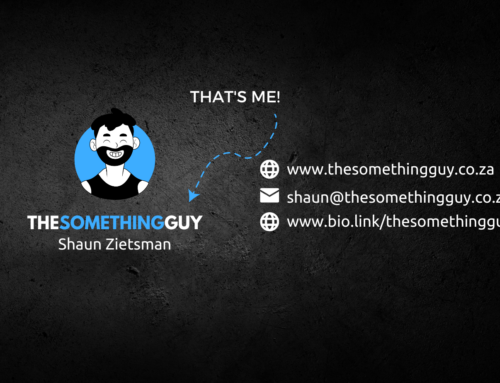What is this race thing all about?
The other night a bunch of us went to go and listen to Alan Storey from the Central Methodist Mission in town share some of his thoughts as an Introduction to Privilege and Racism.
Alan’s dad Peter Story was at one-time chaplain to Nelson Mandela and others on Robben Island, at the request of Mandela. But Alan has continued the legacy of speaking truth and justice to power, focusing on aspects of justice as he leads the church in the centre of the city of Cape Town.
i was able to jot down some of the concepts and stories on my phone as he was speaking and so this is just a glimpse of some of the ways that he unpacked different aspects of privilege and racism in what was an introductory session.
Starting with what seemed like quite a random Fish Story…
Four fish are swimming along and they pass an older fish and he asks them, “How’s the water?”
They swim in silence for a while before one of them responds…
The idea of living in a society that is steeped in racism both overtly and subtly in terms of direct interactions but also more specifically systems and structures that are geared towards some people succeeding more then others… and the inevitable question follows, “What the hell is water?” You live in it, but you are ignorant of it.
Super helpful reminder.
Which, if you think about it for a moment would be exhausting if that was the story of your whole life. i mean, we saw this yesterday with the #MeToo tag of women sticking their hand up to say that they too had been victims of sexual assault and abuse in some way and in many cases some ways their whole lives. As men, it never happens to us and so we don’t see it. For women, it is an exhausting daily journey of fear and anxiety and second-guessing clothes and actions and possible outcomes of meetings with the boss, and so on.
Post-its
Alan told a Storey [i see what i did there!] about an experiment he does when he speaks to groups in a business setting which involves handing out a post-it to each person in the room. He asks them to indicate whether they are black or white or coloured or indian and male or female on the post-it. Then he asks them to give a number from one to ten on the other side of the post-it to indicate their fear factor in working in that company. Zero being nothing and ten being absolute fear.
Without fail he told us that white males seldom got higher than a 3, white females seldom higher than a 5, while black male and female would typically be in the 6, 7 and 8 range.
The idea that there are people drowning on the same team.
When he asks questions about what people fear the worst thing someone else in the office might say or think about or to them, the results are pretty eye-opening as well. White guys are not responding with “I’m not good enough to do the job” and so on.
What the hell is whiteness? It is invisible to so many of us.
What’s in your knapsack?
Alan referred to this brilliant article by Peggy Mcintosh titled ‘The Invisible Knapsack’ and if you haven’t seen it before, click the link and go read the full article, but basically, it is a list of 50 statements that you read and then see if you can tick them off or not.
For example:
3. If I should need to move, I can be pretty sure of renting
or purchasing housing in an area which I can afford and in
which I would want to live6. I can turn on the television or open to the front page of
the paper and see people of my race widely represented.12. I can go into a music shop and count on fi nding the
music of my race represented, into a supermarket and fi nd
the staple foods which fi t with my cultural traditions, into a
hairdresser’s shop and fi nd someone who can cut my hair17. I can talk with my mouth full and not have people put
this down to my color20. I can do well in a challenging situation without being
called a credit to my race.39. I can be late to a meeting without having the lateness
reflect on my race.46. I can chose blemish cover or bandages in “flesh” color
and have them more or less match my skin.
A Different Beep Beep Machine
Alan used the analogy of a white person scanner – that never beeps when i go through it and always allows me to go through unchallenged. That tells me i belong, that the colour of my skin is never going to be a barrier for me to get in anywhere, and i don’t even know it – it gives me the confidence for moving in and out of spaces – it gives me a sense of entitlement, feeling deserving of being treated a certain way, of being listened to, or given attention, or served quickly – that my skin colour is an asset – a protective armour of sorts – that it gets me the benefit of the doubt – it adds to what i do rather than subtracts – i swim with the current.
It positively works in my financial favour – it doesn’t raise suspicion about whether or not i will be able to pay back a loan – i am never asked to speak for all whites, to represent white people.
He spoke of the fact that white males have killed more people than anyone else – but because we identity with them, we don’t draw conclusions because we sit with the belief that “I am not like that!”
Alan added that if he went right now [8pm midweek meeting] and sat in the lobby of the hotel down the road, that no one would be chasing him out or asking him why he is there, and if he is very honest, someone is likely to come up to him and ask if they can help/serve him in some way.
Blindness
We are blind to privilege and blind to how we take advantage of the privilege [which may be why we get so much pushback when we try to educate people about white privilege].
Jane Eliot defines privilege as ‘Being totally ignorant about people who are different than us’ – then we deny the ignorance and then add that “You misunderstand me!”
James Baldwin said that white people only know one thing about black people and it’s the only thing they need to know – that they [white people] don’t want to be black people!
Jane Eliot, who is known for her excellent and somewhat controversial blue eyes/brown eyes experiment [check it out over here] would typically start race conversations by saying, “Please stand if you want to be treated as black people are” – and no one would stand – because we know! And if you know that a major part of the population is being treated in a way that you would not want to be treated, then what are you doing about it?
Out of this place that some lives don’t matter as much as other lives is where the #BlackLivesMatter movement comes from.
Which often quickly draws the response from a white person that #AllLivesMatter.
At a Save the Rhino meeting, no-one puts up their hand and says “Save the Giraffe!” because at this point the rhino is threatened and is the one in need of saving. No one has ever doubted or questioned that White Lives Matter and yet so much of the world [think in broad terms of slavery, apartheid and so much more] constantly suggests that black lives matter less.
Advantage vs Disadvantage
There is a causal connection between the underprivleged and the overprivileged [i like that term!]
Between the advantaged and the disadvantaged.
Stats SA shows that 70% of all management in South Africa is still white males.
Which is interesting in itself, but when you take into account how small a percentage of the entire population white males make up it becomes a little ridiculous.
The Kubler-Ross Five Stages of Grief – Denial, Anger, Bargaining, Depression and Acceptance – come in handy when dealing with privilege. These are not linear and often can take place simultaneously.
Where did white people come from?
[This section was an eye opener for me as i always kinda thought white people had been around]
According to Alan Storey naming whiteness came about as a Divide and Conquer strategy some time at the end of the 1600s, early 1700s when there were slave uprisings in Maryland, Virginia. Before that, people had typically been known by their nationality – the Ductch, the Spanish, the Portuguese etc. But when the slave risings happened, the one group identified as being white were told that they could be in control of the rest of the slaves if they complied and this whiteness came into being and started at the top of the pile…
Target vs Non-Target
My skin colour is a bridge, not a barrier.
Alan then put up a list with the heading: Intolerances/Oppression
TYPE TARGET NON-TARGET
Classism Poor Rich
Sexism Woman Man
Racism Black/Indian/Coloured White
Ageism Young/Old 30-55
Religion Other [Traditional/ African etc] Christianity
Sexuality LGBTQI Straight
Geo Location Rural/Township Urban
Education No Matric Tertiary
Gender Transgender Cisgender
Marital Status Divorce/Single Married
Health HIV+ HIV-
Physical Ability Disabled Able-bodied
Employment Unemployed/Underemployed Employed/Professional
Language Not English English
Which i think speaks largely for itself. Highlighting different areas of privilege or non-target.
Alan spoke of how there was accumulated interest as you ticked more than one box as well as increased depreciation as you ticked more than one box of the target side.
He also mentioned the conversations that take place in your head if you have target status in any of those areas as you enter a room or space where non-targets are.
The Mountain and the Mole-hill
Alan asked the room, “Who was the first person to climb Mount Everest?” and being the brain i am, i immediately knew it was going to be a trick question and so i was sitting mouthing “Sherpa Tensing”
But his answer still managed to surprise me. As someone confidently called out “Edmund Hilary”, Alan informed us that Hilary had had 35 sherpas and 150 porters with him, many of them carrying the very heavy gear needed to get them to the top. But whiteness remembers the man with the money pouch.
How is it possible that 186 people are the first people to climb Mount Everest and we are taught one, or in some cases two, solitary names?
i see a white person running across the road and i think to myself, “He must be in a hurry!”
i see a black person running and i immediately wonder what they are up to.
The conversations that take place in my head, all the time.
Filled with stereotypes and assumptions.
= = = = = = = =
There you have it – just some of the notes i was able to grab from what was a much better presentation as a whole, but hopefully this helps give some more tools or ways of explaining privilege or even some ways of seeing it in yourself.
If you find it useful in any wway, i hope you will share it with others you know who are still trying to figure out these things.






![The Road to the Catan World Champs in Malta 2022! [Part II]](https://brettfish.co.za/wp-content/uploads/2022/11/IMG_9944-scaled-e1669831201283-500x383.jpg)
![The Road to the Catan World Champs in Malta 2022! [Part I]](https://brettfish.co.za/wp-content/uploads/2022/11/catanchampionships-500x383.jpg)

Leave a Reply